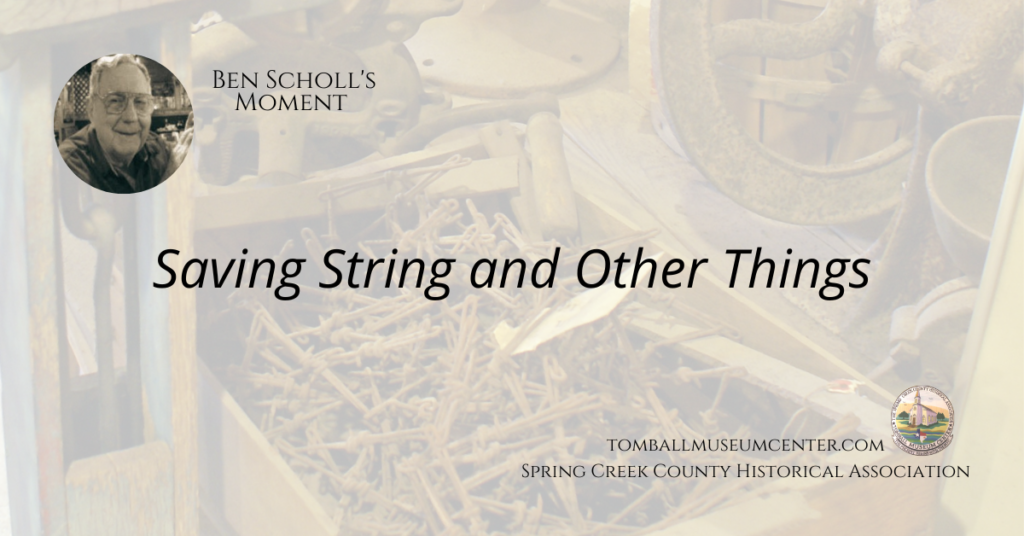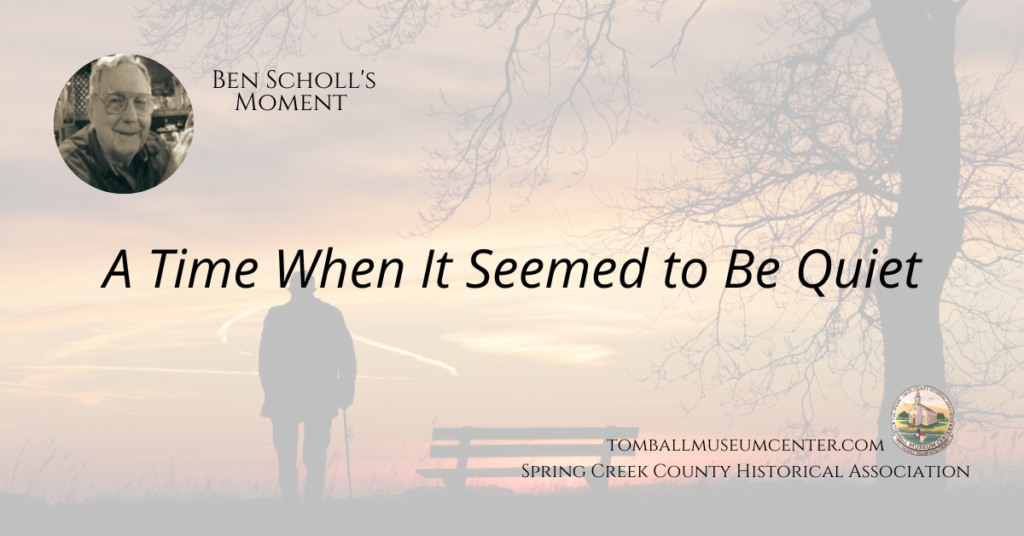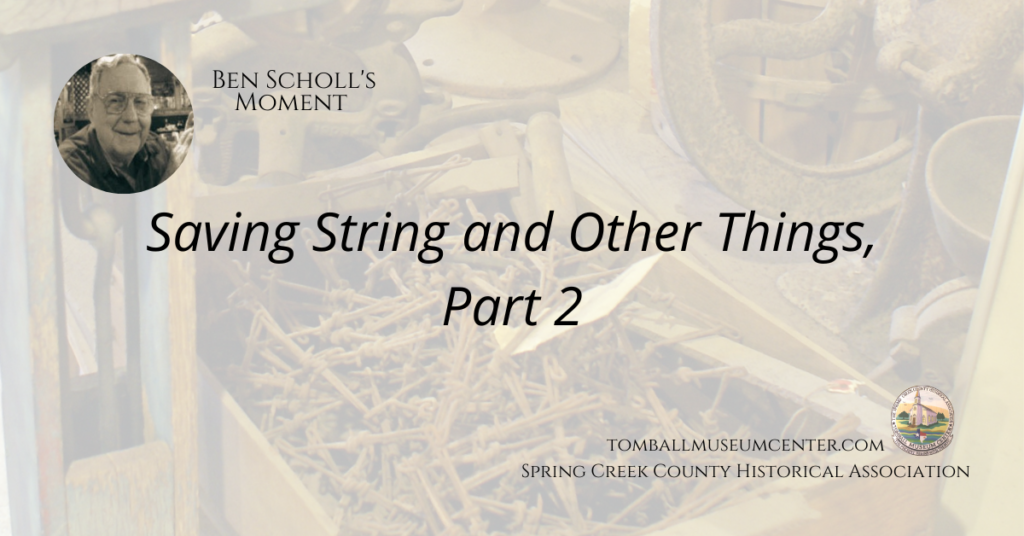Ben Scholl’s Moment
Saving String and Other Things
In spring 2001, the Griffin House, the largest building on the Tomball Museum property, was repainted. The painter had to replace some of the boards and the new boards had to be special-milled to match the existing boards. Since cypress siding is no longer available we replaced it with West Coast Cedar, which was milled by a mill in Conroe. One afternoon I stop by the job to check on the progress and I spotted a square nail on the ground. I picked it up, which at my age isn’t easy, and placed it in my pocket. Seeing several more on the ground, I borrowed a magnet on wheels from a roofer. Going around the Griffin House several times I found more square nails, screws, staples and other bits of steel. About 20 of the nails looked as good as they did when the house was built in about 1860.
Later that summer I again came across the nails, in a coffee can in my shop. I thought that maybe some of the “friends of the museum” would like to have a nail and I considered mounting them on a board. I found some scraps of plywood which a carpenter had thrown away while building cabinets at the house next-door and selected some pieces suitable for mounting nails, with space underneath to write about the history of the nails. I looked for my spool of picture hanging wire to fasten the nails to the boards but could not locate it in my messy workshop. I did, however, find a small roll of 22 gauge copper wire, garnished and wrapped with two layers of cotton and waterproofed with wax. I had salvaged this wire about 65 years previously after it was thrown away by a crew looking for oil. The soft wire with the wrapping removed worked great for mounting the nails. As I was working on the project, termites were discovered in the museum’s church and in replacing several boards in the floor more square nails were salvaged and added to my nail collection.
The nails, the wood and the wire show once again that I am a “saver”. I remember once seeing a picture of someone who had saved a record-setting 4-foot ball of string. I don’t save to set a record but to use things at a later date. As a small boy I started saving nails to use when building things like bird houses. I have an early memory of going to the picnic at Salem Lutheran Church with my grandparents. My grandfather gave me a nickel to buy an ice cream cone but I saved it and bought a small bag of shingle nails at Froehlich’s store. (At Froehlich’s I could get a pound of shingle nails for 5 cents.)
On the farm, we saved and recycled many items. The wood from apple boxes that had a picture of an Indian on the end of the box was my favorite building material. The boxes had to be reused for farm work but occasionally one would break or wear out and I begged for the broken pieces. Boxes for grapes and prunes called lugs were also coveted. When we had a windstorm, I searched for shingles that might have blown from the house or barn roof.
My parents always bought a ball of string when we made sausage. Once or twice they bought a ball of string for my kites or fishing line for my brother. All other string was recycled. 100 pound feed sacks or hand-sewn with string about 1/8 inch in diameter, which we removed and saved. If this string was thrown on the ground, the chickens would get it tangled around their feet, and occasionally birds wanting string to build nests would get it tangled in the branches. The tops of the feed sacks were folded and sewn, leaving two ears about 4 inches long for grabbing and lifting the sacks. Later the sacks were closed with a handheld sewing machine and could only be opened from one side. The later string was thinner and had limited uses.
Rubber bands were made from real rubber and in hot weather would stick together. Larger bands cut from inner tubes (all tires had inner tubes) were vulcanized and the heat did not affect them. They were long lasting, and I think the red ones were better than the black ones. Some bands were used for many things including toy paddlewheel boats and airplanes.
Occasional we would get a small piece of aluminum foil. It was always saved and had many uses, especially as a good conductor of electricity. When we got a piece of lead foil Brother Erwin wanted it for sinkers on his fishing lines.
Join us in the next newsletter to read more about Saving Goose Wings, Plastic Rings, Corks, Posts, and Plates.
Written by Benjamin H. Scholl


